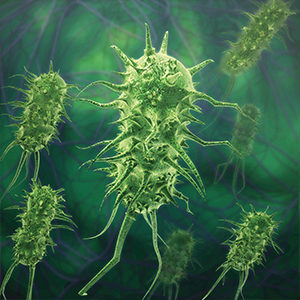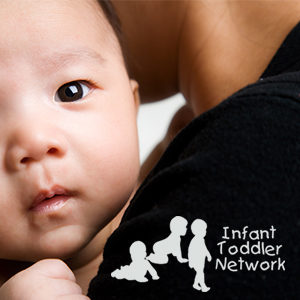Pertussis, or whooping cough, is a highly contagious disease involving the upper respiratory tract. It is caused by the bacterium Bordatella pertussis that can be found in the mouth, nose, and throat of an infected person. Approximately 400 to 1,000 cases are reported each year in Washington State, but this is highly variable from year to year.
Pertussis can occur at any age. Severe illness is more common in young children who have not been immunized. Older immunized children or adults with pertussis have milder symptoms. Those at increased risk for severe pertussis are:
Pertussis is primarily spread when infected people cough or sneeze, expelling droplets that contain Bordetella pertussis bacteria. Pertussis spreads by direct contact with infectious respiratory secretions by droplet transmission. Such droplets generally travel three feet or less when an infected person talks, coughs, or sneezes. Older siblings or adults who may not have symptoms or who may have mild symptoms can still infect other people, especially infants.
Pertussis begins as a mild upper respiratory infection. Initially, symptoms resemble those of a common cold, including sneezing, runny nose, low-grade fever (oral temp <100.4 °F) and a mild cough. Within two weeks, the cough becomes more severe and is characterized by episodes of many rapid coughs followed by a gasping for air with a high-pitched “whooping” sound. This extreme coughing may cause patients to throw up or become very tired. Patients may cough up thick mucus. These episodes may recur for one to two months and are more frequent at night.
Young children who have not been immunized have the most severe symptoms. Infants less than six months old, adolescents and adults often don’t have the characteristic whoop. Young infants may experience apnea or a pause in the child’s breathing pattern.
The time between exposure and illness is usually 5 to 10 days, but may be as long as 21 days.
A person is contagious from when they first notice cold-like symptoms to three weeks after the onset of coughing episodes. Treatment of cases with antibiotics, such as azithromycin, can shorten the contagious period to 5 days, but it will not shorten the length of time a person continues to cough afterwards, unless antibiotics are started very early on in the illness (before coughing fits begin).
A pertussis infection usually provides immunity for many years, but immunity is usually not life-long. The duration of immunity after natural infection with B. pertussis is believed to wane after 4-20 years.
Pertussis can cause serious and sometimes life-threatening complications in infants and young children, especially those who are not fully vaccinated. In infants younger than one year of age who get pertussis, about half are hospitalized.
Complications of pertussis may include:
Yes. The childhood vaccine for pertussis, DTaP, is given in combination with diphtheria and tetanus. Five doses are recommended: at 2, 4, 6, and 15-18 months of age, and a fifth dose between ages 4 and 6 years or by the time a child enters school.
One-time boosters (Tdap) are available for people ages 11 to 64 years. Tdap should also be given to 7-10 year olds who are not fully immunized against pertussis. All adults over 18 years old who have not previously received Tdap should receive a single dose regardless of the interval since the last Td.
Women of child-bearing age should be re-vaccinated during each pregnancy, preferably after the 20th week of gestation and at least 2 weeks before the anticipated delivery.
The best control measure is maintaining the highest possible level of immunization in the community.
Anyone who comes into close contact with someone with pertussis should receive antibiotics to prevent infection and spread of the disease.
People who have or may have pertussis should stay away from young children and infants, as well as others, until day six after starting their antibiotics.
Practicing good respiratory etiquette is always recommended to prevent the spread of respiratory illnesses.
Stay home while sick and away from others.
If requested, use face masks provided in medical offices or clinic waiting rooms.

Working with providers on the incidence, distribution, and possible control of diseases, illnesses and other factors relating to health.

Epidemiologists monitor, track, and respond to infectious disease in the community to prevent spread of illness.

Early support for infants and toddlers who have disabilities or developmental delays. Families who have concerns about their child’s development can contact the program to receive assistance and information.